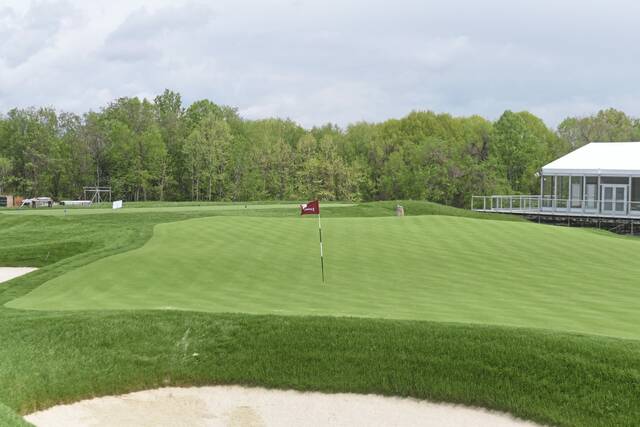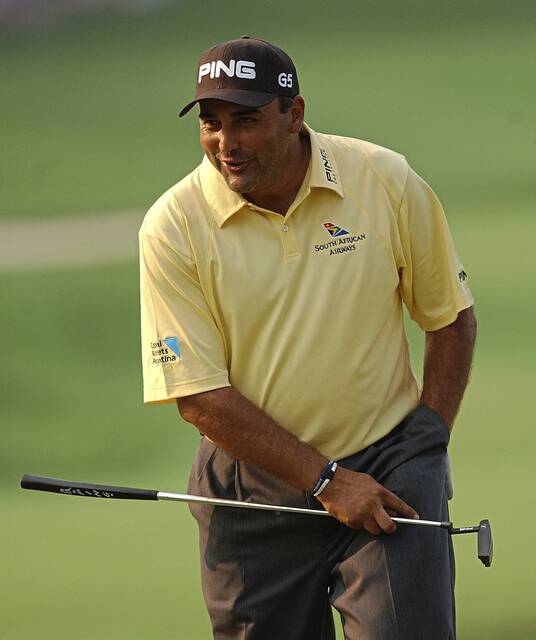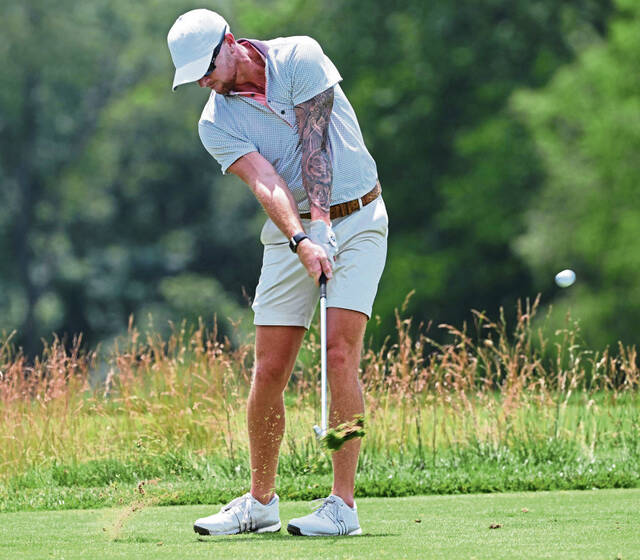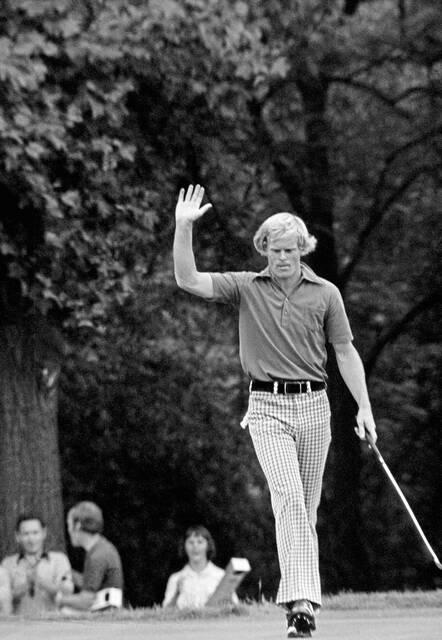U.S. Open hole by hole: Piano Keys, massive green among trouble spots on No. 15 at Oakmont
From the pristine fairways and lightning-fast greens to the punishing bunkers and club-twisting rough, Oakmont Country Club is one of the toughest tests for even the world’s best golfers, who will descend upon Western Pennsylvania for the 125th U.S. Open from June 12-15.
TribLive is producing a hole-by-hole look at what makes Oakmont Country Club one of the most popular and anticipated stops for the USGA.
Hole 15 breakdown
Length: 507 yards, Par 4
Handicap: 3
2016 U.S. Open stroke average: 4.39
Description
The longest par 4 on the course, No. 15 is also among the toughest holes at Oakmont Country Club.
A blind tee shot heads toward a fairway that slopes from left to right. That works out well for most players who are trying to avoid another signature hazard on the course.
The Piano Keys hazard, a smaller version of the Church Pew bunker, runs along the left side of the hole and forces golfers to play their tee shot to the right of the fairway to avoid the hazard. Though they have to be aware of a ditch to the right as well.
At the 2016 U.S. Open, the field averaged 291 yards off the tee, so they took their chances at attacking No. 15.
A large green also slopes left to right but comes with some danger. There is a large greenside bunker on the right and three smaller ones on the left. The green has a swell that runs horizontally through the middle, making lag putts a challenge on the lengthy surface.
No. 15 played as the third-toughest hole on the course in 2016, as there were just 32 birdies. On the other hand, there were 151 bogeys and 25 double bogeys.
Memorable moment from U.S. Open
Angel Cabrera helped secure the U.S. Open championship in 2007 with a mammoth 340-yard drive on No. 15. He followed that with a short iron to within 3 feet of the pin. That birdie helped him finish 5-over-par and atop the leaderboard.
How the locals play it
Darin Kowalski, who won the Tri-State PGA Section Pittsburgh Open in 2024 for a second time, is one of the area’s top amateur players. The 39-year-old Bethel Park resident and Point Park grad also won the Tri-State Amateur in 2024 and was runner-up in three of the past five Western Pa. Amateur events. He’s played Oakmont more than 50 times, including last month.
“There’s really no bailout on that hole. Left you have the bunkers, right you have the ditch. My approach is it’s one of those shots where you just have to man up and hit it. As long as that hole is, if it’s firm, I wouldn’t be surprised to see those guys lay back with some irons. Hitting the fairway is just paramount, which is so different than the week-to-week courses the PGA Tour plays.
“What makes that green kind of tough — the majority are pretty severe from a slope perspective — that green, it’s the subtle movement that makes it tough. It’s a big green. You have that little dip as well. There’s fairway leading up into that green, so that the green and hole allows the run up and then you have to judge how much it will run because the size is just massive.”
Around the U.S. Open
Spotlight
Joaquin Niemann
The man atop the LIV Golf rankings is hunting his first major victory but has put together a strong resume this year to be considered among the contenders.
Joaquin Niemann, a 26-year-old Chilean, has three wins this year on the LIV Golf circuit. He had two victories on the PGA Tour before joining LIV in 2022 and now has 18 pro victories to his credit.
Niemann is playing in the U.S. Open for the sixth time. His best finish was in 2020 when he tied for 23rd at 10-over at Winged Foot. He finished in a tie for 32nd in 2023 when he shot 3-over at Los Angeles Country Club in his most recent Open appearance.
He tied for eighth at the PGA Championship at Quail Hollow at 4-under last month.
Niemann was an accomplished amateur before turning pro, winning the 2018 Latin America Amateur championship in his hometown in Chile, and he held the No. 1 spot in the World Amateur Golf Ranking in 2017.
He went on to play for the international team in the 2019 Presidents Cup.
By the numbers
16 — Birdies for champion Scottie Scheffler en route to a 10-under finish at the Memorial Tournament
3 — Players who have won the U.S. Open, U.S. Amateur and NCAA title: Jack Nicklaus, Tiger Woods, Bryson DeChambeau
15 — Largest margin of a U.S. Open victory (Tiger Woods, 2000 at Pebble Beach)
Quotable
“Yeah, you have to like the fact that 30% of the guys are going to hate it, and they’re going to be gone really quickly. That golf course is going to drive you crazy. So you need to accept that and realize that everybody’s going to have to deal with the same stuff. I’ve played a U.S. Amateur there, I’ve played a couple Opens there. I kind of know what to expect when you get there. You’re going to have some three-putts, you’re going to have some great putts that don’t go in, you’re going to look silly a few times around there, and you’re going to pitch out a lot. So that’s part of it. … If you put it in the wrong spot there, you’re going to make a big number.”
—Brandt Snedeker, talking about Oakmont after tying for seventh at the Memorial Tournament on Sunday
U.S. Open history
Here’s a look at the biggest final-round comebacks by winners in the U.S. Open:
7 strokes, Arnold Palmer (72-71-72-65), Cherry Hills C.C., Englewood, Colo., 1960
6 strokes, Johnny Miller (71-69-76-63), Oakmont C.C., 1973
5 strokes, Walter Hagen (78-73-75-75), Brae Burn C.C., West Newton, Mass, 1919
5 strokes, Johnny Farrell (77-74-71-72), Olympia Fields C.C., Matteson, Ill., 1928
5 strokes, Byron Nelson (72-73-71-68), Philadelphia C.C., West Conshohocken, Pa., 1939
5 strokes, Lee Janzen (73-66-73-68), The Olympic Club, San Francisco, Calif., 1998
If you missed it
No. 1: U.S. Open hole by hole: No. 1 at Oakmont among world’s toughest opening tests
No. 2: U.S. Open hole by hole: Sloping green among challenges on No. 2 at Oakmont
No. 3: U.S. Open hole by hole: Church Pews a landmark hazard on No. 3 at Oakmont Country Club
No. 4: U.S. Open hole by hole: Birdie opportunity within reach on No. 4 at Oakmont
No. 5: U.S. Open hole by hole: Aggressive play can be rewarded on No. 5 at Oakmont
No. 6: U.S. Open hole by hole: Danger lurks on, around No. 6 green at Oakmont
No. 7: U.S. Open hole by hole: Players will face mental test with club selection on No. 7 at Oakmont
No. 13: U.S. Open hole by hole: A short par 3, Oakmont’s No. 13 is surrounded by sand
Bill Hartlep is the TribLive sports editor. A Pittsburgh native and Point Park graduate, he joined the Trib in 2004, covering high school sports. He held various editing roles before assuming his current position in 2019. He can be reached at bhartlep@triblive.com.
Remove the ads from your TribLIVE reading experience but still support the journalists who create the content with TribLIVE Ad-Free.











